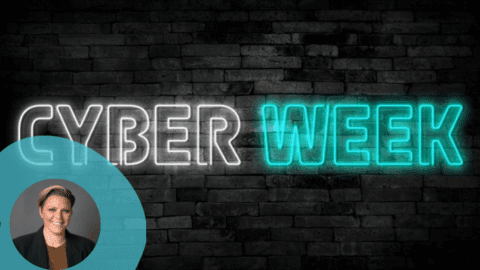Close followers of retail in 2013 realize the importance of social media in creating effective merchandising programs. During the 102nd annual NRF BIG Show earlier in January 2013, a number of educational sessions provided a clear view on the ways retailers are embracing Facebook, Twitter and other emerging communications platforms with a more focused — and practical — purpose than before.
The sessions offered lessons-learned by the more adventurous and aggressive retail practitioners of social media-based communication, including Coca-Cola, Meijer, Price Chopper, and Walgreens. Executives from these organizations provided valuable guidance for retailers facing challenges related to integrating new online and mobile technologies.
That ambivalence is reflected in The Value of Social Networking for Brands and Retailers, part of a study sponsored by the Coca-Cola Retailing Research Council (CCRRC). The final two installments were unveiled at a Monday morning session, The Business Side of Social Media: A Study by the Coca-Cola Retailing Research Council.
Almost seven in 10 CMOs who participated in the study said they were “unprepared” for the integration of social media into their overall marketing programs. Perhaps with that in mind, the final two sections provide blueprints for both external and internal social web programs.
Some experts promote the idea that corporate social media use follows a series of phases that begins with “I better figure this out” and ends with “How do I get these people to buy something from me?” If that’s the case, then the majority of North American retailers are roughly halfway along. That places them at the stage where it’s still more important to listen to and respond to customers through Twitter and Facebook than it is to use those platforms to directly try to sell them something.
“If all you do is (use social media to) sell, sell, sell, you’ll turn off your audience,” said Miguel Almeida, VP of e-Commerce for Walgreens, during a session, titled: Tearing Down the Walls: Winning in a “Wall-Less” Retail World. He framed Walgreens’ use of social media within its aggressive expansion of web-based marketing, explaining that social media “is an integral part of a broader (merchandising) program.”
When Customer Complaints Go Viral
A turned-off audience can quickly turn toxic, noted Erik Qualman a social media expert who addressed show attendees during a luncheon presentation, titled: Socialnomics — Transforming the way Retailers do Business in the New Social, Mobile and Digital World. One angry customer picketing in front of one store entrance is a mere pinprick compared to the devastating impact a protest YouTube video gone viral can wreak on an unresponsive organization.
Qualman, author of Socialnomics, visibly stirred the crowd when he played a YouTube video created by a Canadian band after United Airlines baggage handlers destroyed the guitar of one of the band members. The now-infamous music video, seen by more than 12 million viewers, is one of the best-known cautionary tales of the impact of corporate indifference.
Retailers need to use social media to react to flaws, Qualman argued. “Always look how you solve a customer issue and you resolve a business issue,” he told a packed crowd on the first day of the show.
With that in mind, at least a few retail executives at NRF argued that in a time when the buying public is arguably more cynical and wary than ever of slick marketing — and where social media is often the vehicle to expose hypocrisy — it’s much better to be authentic than rehearsed with social media-based outreach.
“We were way too polished in social media,” said Michael Ross, VP of Customer Marketing and Loyalty for Meijer, noting how the company used Twitter and Facebook early on to communicate with the chain’s customers. “You have to be sincerely interested in what the customer has to say.”
“Sincere” and “interested” does not mean unprepared, though. The Grand Rapids, a Michigan-based hypermarket chain, with stores in five states, initially took a common approach to social media by centering it in the company’s marketing department, but Ross noted that it now touches departments “throughout the organization.” All 54,000 employees, he said, have access to web-based social media training.
Ross, who spoke at the CCRRC session, cited the daily potential impact on Meijer from the willingness of consumers to react “instantly” with feedback on anything the chain says or does. With that in mind, the Meijer cultivates “quality followers” who can help shift the tone of those conversations in its favor.
Social Media’s Impact On Revenue
That’s not to say that social media as a conversational tool is completely divorced from top-line revenue. Heidi Reale, Director of Marketing and Consumer Insights at Price Chopper Supermarkets, pointed out that “engaged” customers tend to spend more at the chain than those who do not follow it on Facebook and Twitter. “For us, it’s all about the engagement with the consumer.”
Some of the executives who spoke about social media at the show had an even more tangible measure of the value of online customer engagement. Walgreens’ Almeida noted the ripple effect that the multiple touch points of social, mobile and web site marketing can have on the bottom line. Walgreens customers who go to both brick-and-mortar stores and the chain web site are 3.5 times as valuable, and those who visit Walgreens stores and also use the mobile apps are 4 times as valuable.
Those touch points are rapidly evolving, though, and there were repeated indications at the show that the core of the social media world, at least for retail, may be shifting.
Perhaps surprisingly, given the way so many consumer products and services companies devote serious budget to Facebook promotions and related activities, Reale of Price Chopper Supermarkets said the 129-store New England and Mid-Atlantic chain has been finding more tangible opportunities to turn customers into revenue arise on Twitter, not Facebook. “The cash register is not on Facebook,” Reale said. Instead, “It’s on Twitter,” where the combination of rapid fire messaging with short headline content seems to be a good platform for delivering instant gratification.
Reale had plenty of company in that view, including Jill Puleri, IBM Global Business Services VP, Global Industry Leader for Retail, and Qualman, who implied that Facebook’s value for business is beginning to wane. Qualman asserted that, for the teenage generation that will soon enter the key 18-to-35-year-old demographic, Facebook “is a necessary evil.”
Instead, both suggested that retailers embrace Pinterest as a means to connect with potential customers and female customers in particular, given the platform’s estimated 70% female demographic. Pinterest, Puleri added, now delivers the highest click-through rate to third-party web sites of any of the major social media platforms. And Qualman questioned why any retailer would ignore the platform. “It’s so easy. It’s a very light investment.”












